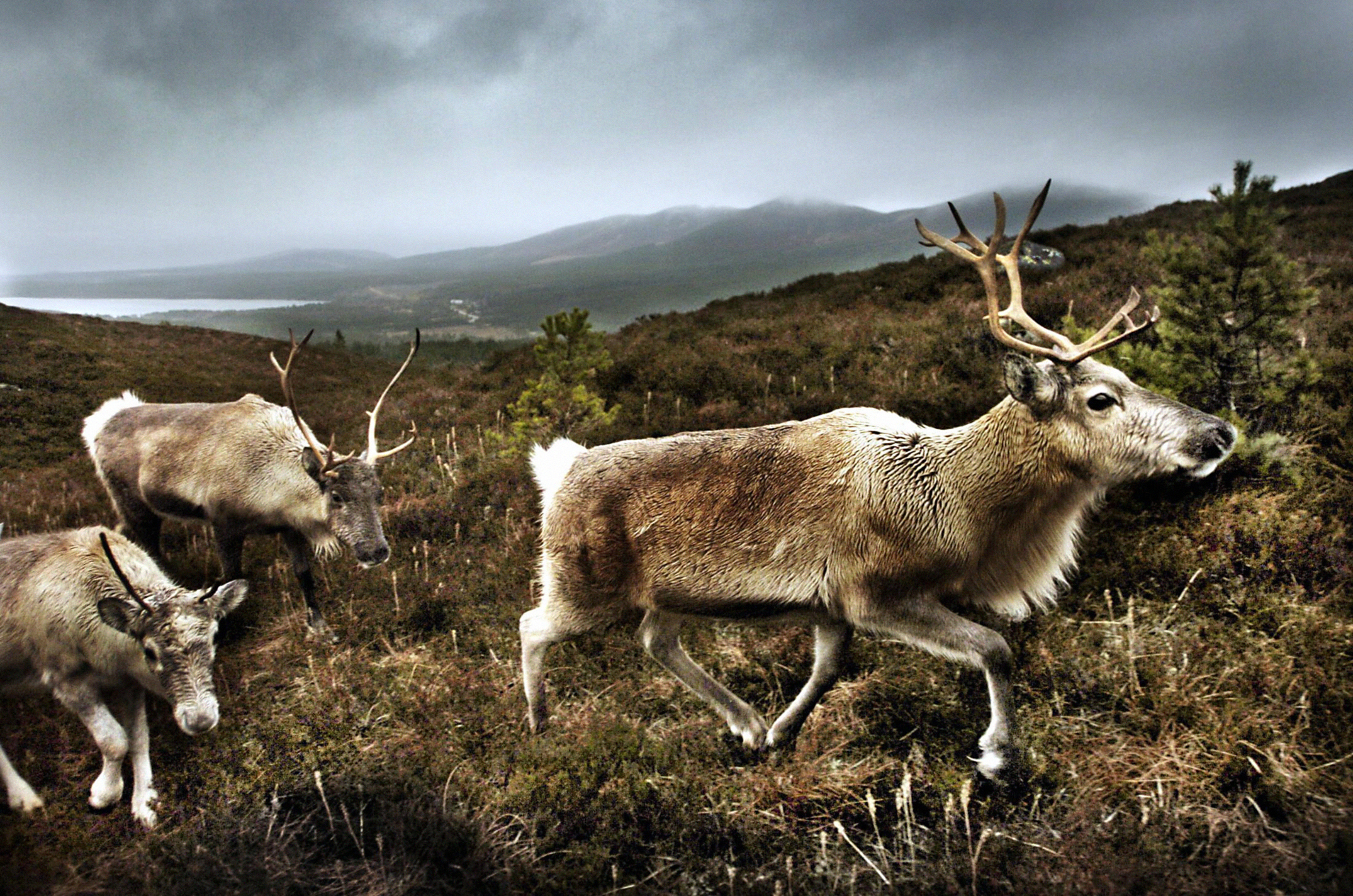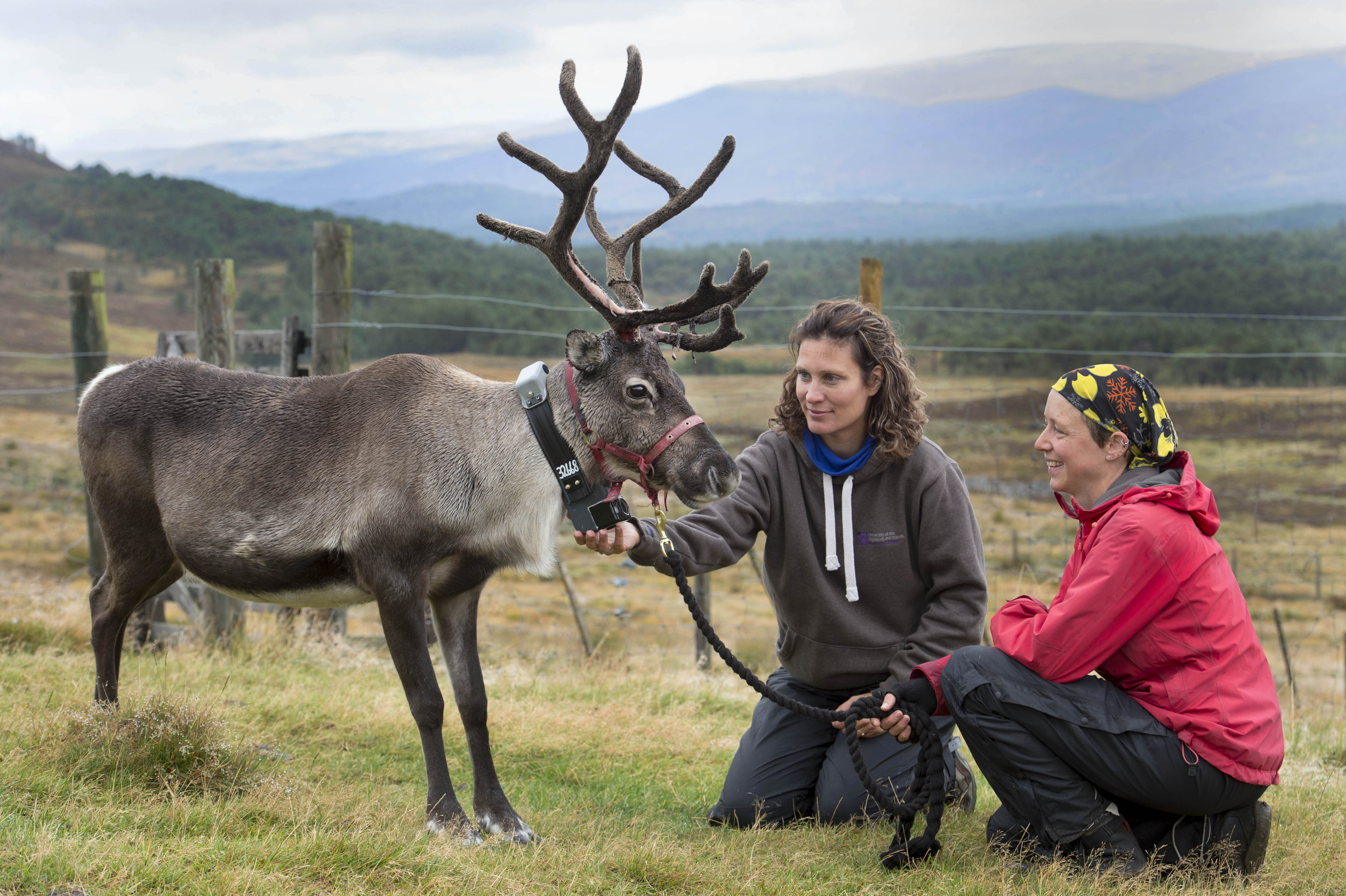
ALTHOUGH we know exactly where they’ll be on Christmas Eve, researchers at the University of the Highlands and Islands are now closely following the movements of Scotland’s free-ranging reindeer.
Using cutting-edge GPS camera collars to find out more about the whereabouts and behaviour of the reindeer, the study forms part of a new research programme designed to inform future sustainable reindeer tourism in the Cairngorms National Park.
The research programme is investigating the ecological role reindeer play in the Cairngorms, focussing on their movements, behaviour and diet, as well as investigating what attitudes and values people hold about the reindeer.
Dr Louise de Raad, Inverness College UHI research fellow and principal investigator on the programme, said: “The Cairngorms National Park contains some of the finest forests and mountain habitats in Britain and landowners are seeking to maximise the restoration and expansion of these areas.
“We know the reindeer are a key visitor attraction, but despite being present for more than 60 years we know very little about their impact on the area.
“Studying their feeding and ranging behaviour will be a first step towards understanding their impact and this will help us make recommendations to ensure that the herd is managed sustainably and continues to make a positive contribution to the area.”
Reindeer in the Cairngorms have been ranging since they were introduced in 1952. They are the UK’s only free-ranging herd, and during winter months, some are taken throughout the country to visit different Christmas events.
Visitors are able to see the reindeer either in paddocks or out on guided trips into the hills throughout the year.
Reindeer facts:
- Real-life reindeer aren’t able to fly, but they can certainly run; the average reindeer can move at speeds up to 60-80kmph.
- Reindeer are the only species of deer where both male and females grow antlers, and they grow a new set every year.
- To deal with the cold, reindeers’ noses are specially designed to warm cold air before it reaches their lungs.
- Reindeer hooves grow in the summer when the ground is warm and shrink in winter when it is cold.
- Reindeers live to be about 10 years old, although some have made it to 18.
The first phase of the research programme is now complete.
GPS collars equipped with cameras and accelerometer technology have been tested on two reindeer, providing video footage of the animals and data on their movements and behaviour.
Meanwhile, researchers at the Royal Botanic Garden Edinburgh have been using genetic analyses of faecal samples to identify food species and gain a better understanding of their diet.
This work runs alongside a socio-cultural study in collaboration with Wageningen University, Netherlands, which has seen more than 400 visitors and local residents surveyed to gain insight into how the reindeer are socially embedded in the Cairngorm landscape.
The next phase is planned to start in April and will see the tracking and dietary study extended to include more reindeer and a larger area of the Cairngorms National Park.
It will also take place over a longer period of time, providing a year round insight into reindeer behaviour.
The research programme will lead to recommendations to enable sustainable reindeer management and the continued protection of designated areas in the Cairngorms National Park.
The project will feature on Landward (BBC Scotland) and Countryfile (BBC1) on 14 and 16 December respectively.

Enjoy the convenience of having The Sunday Post delivered as a digital ePaper straight to your smartphone, tablet or computer.
Subscribe for only £5.49 a month and enjoy all the benefits of the printed paper as a digital replica.
Subscribe